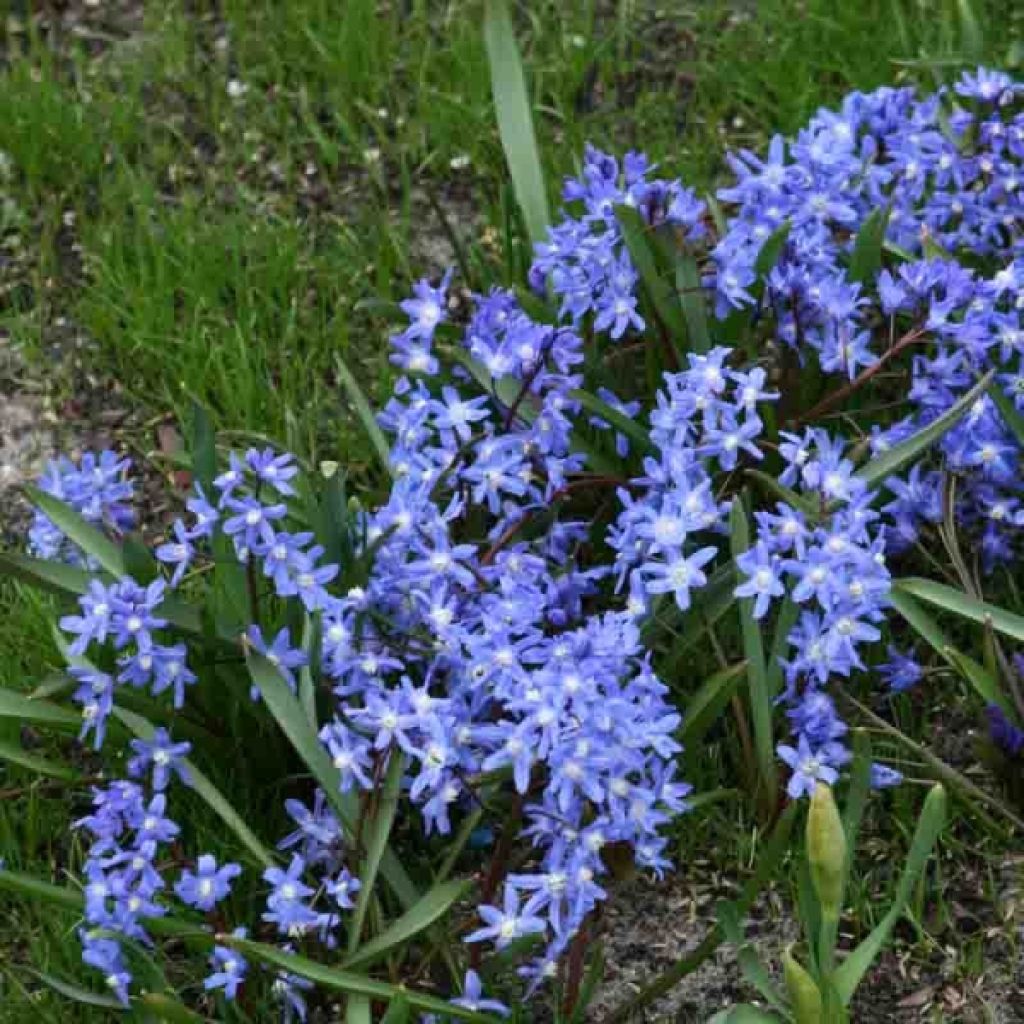

Chionodoxa sardensis
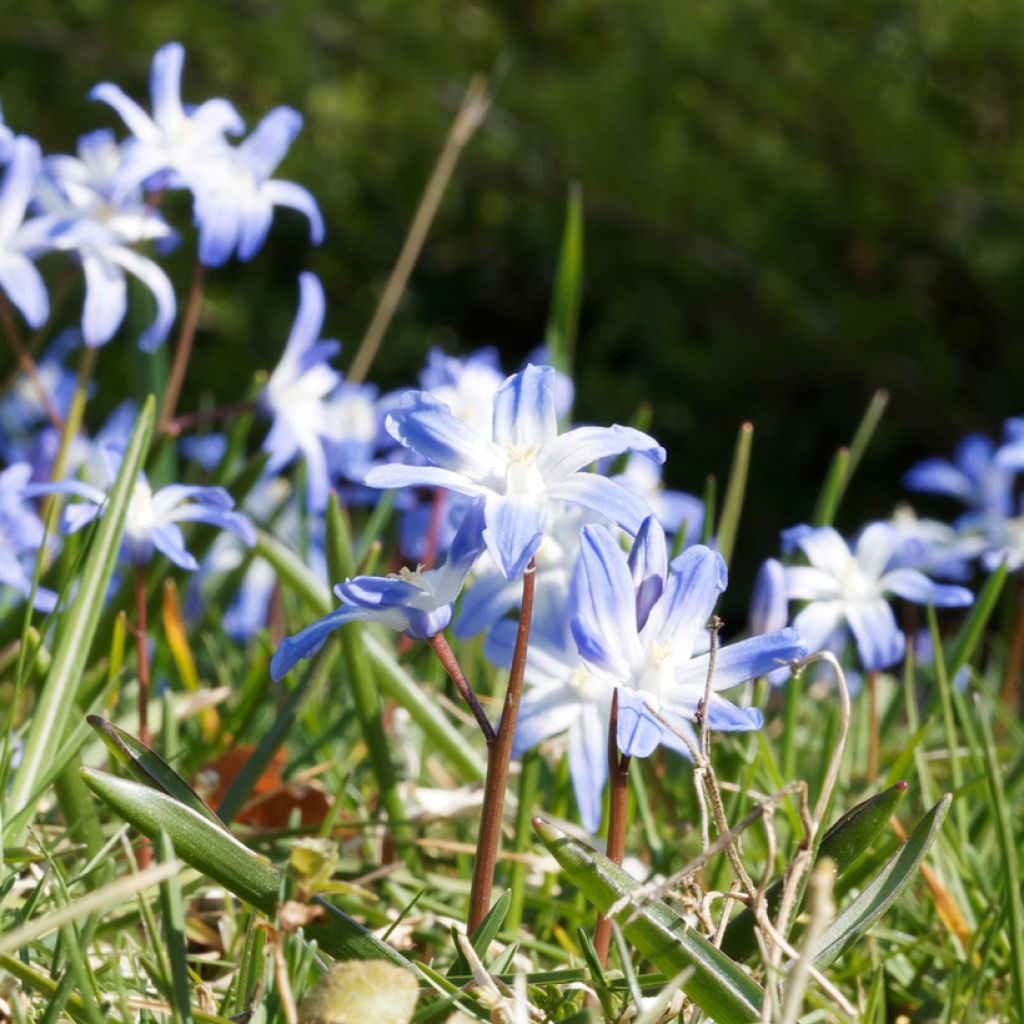

Chionodoxa sardensis - Gloire des neiges
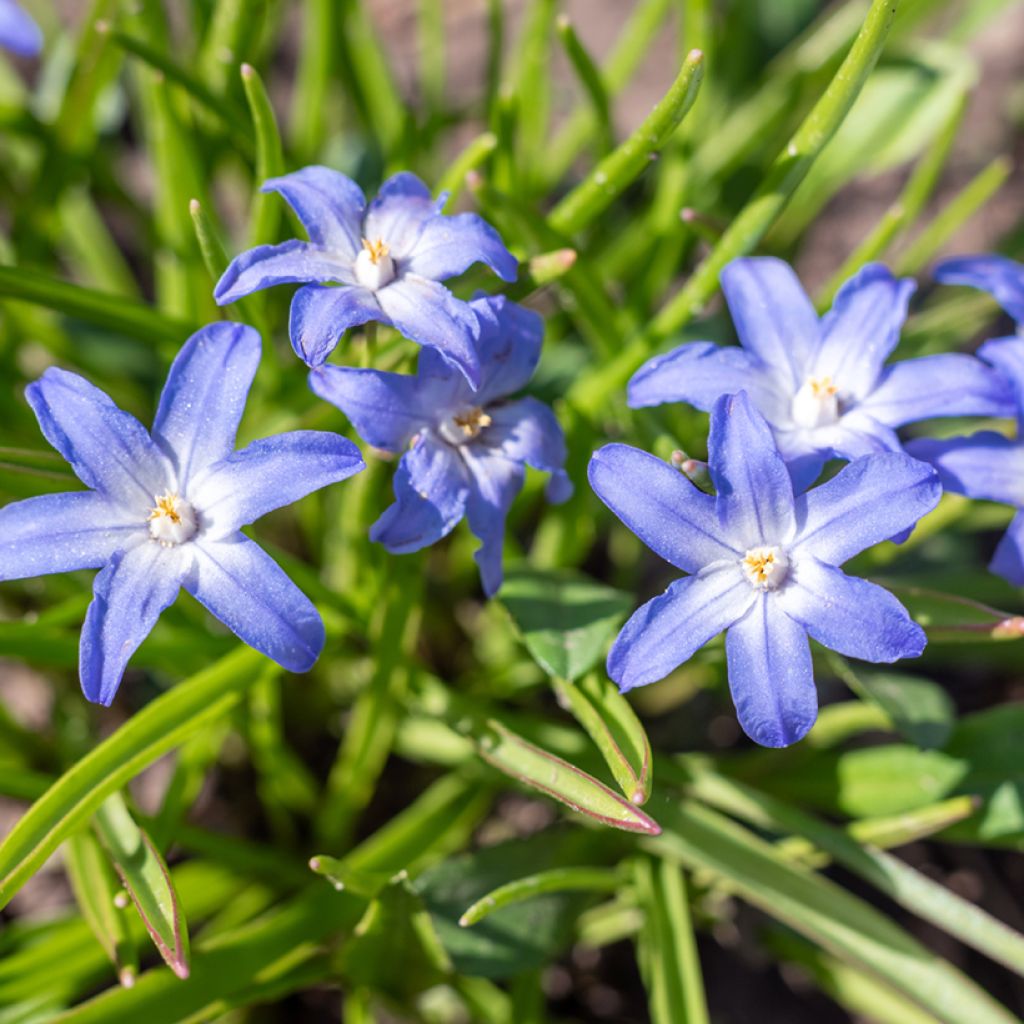

Chionodoxa sardensis - Gloire des neiges
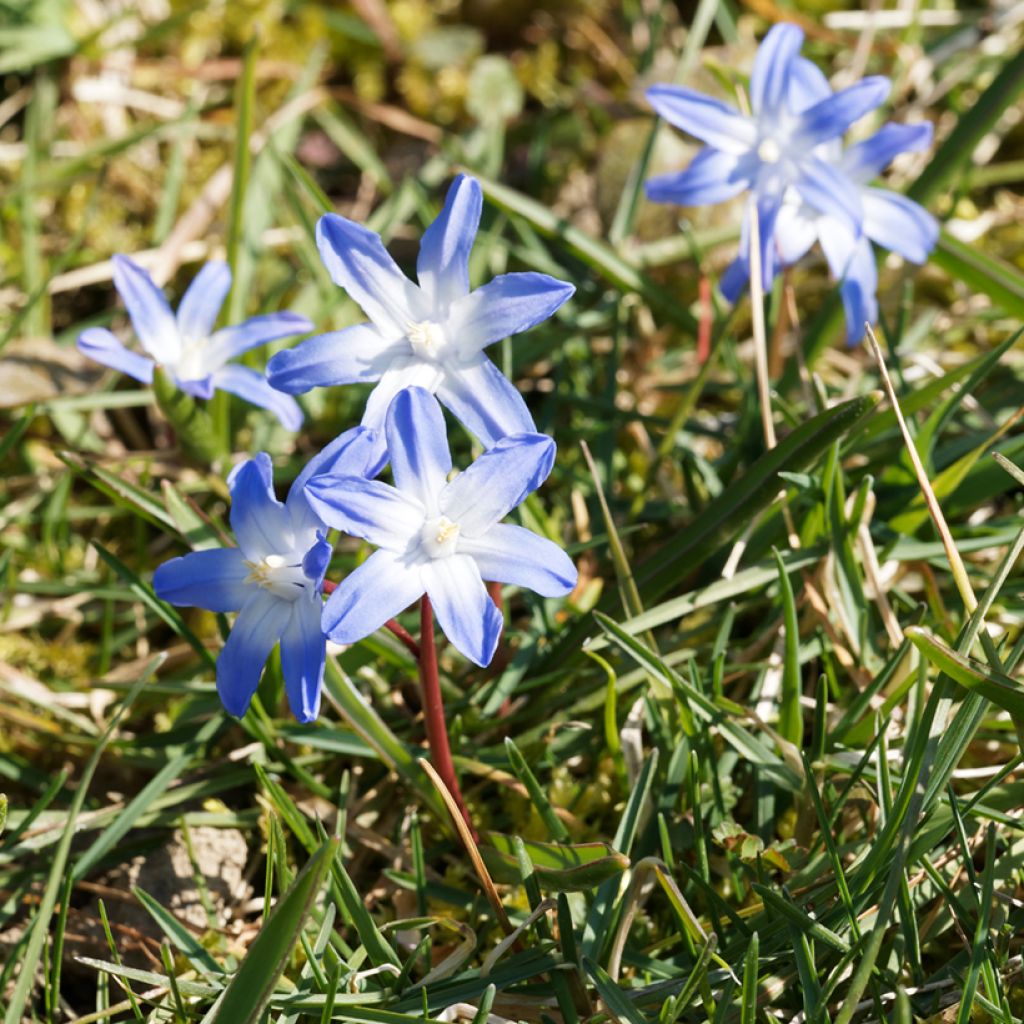

Chionodoxa sardensis - Gloire des neiges
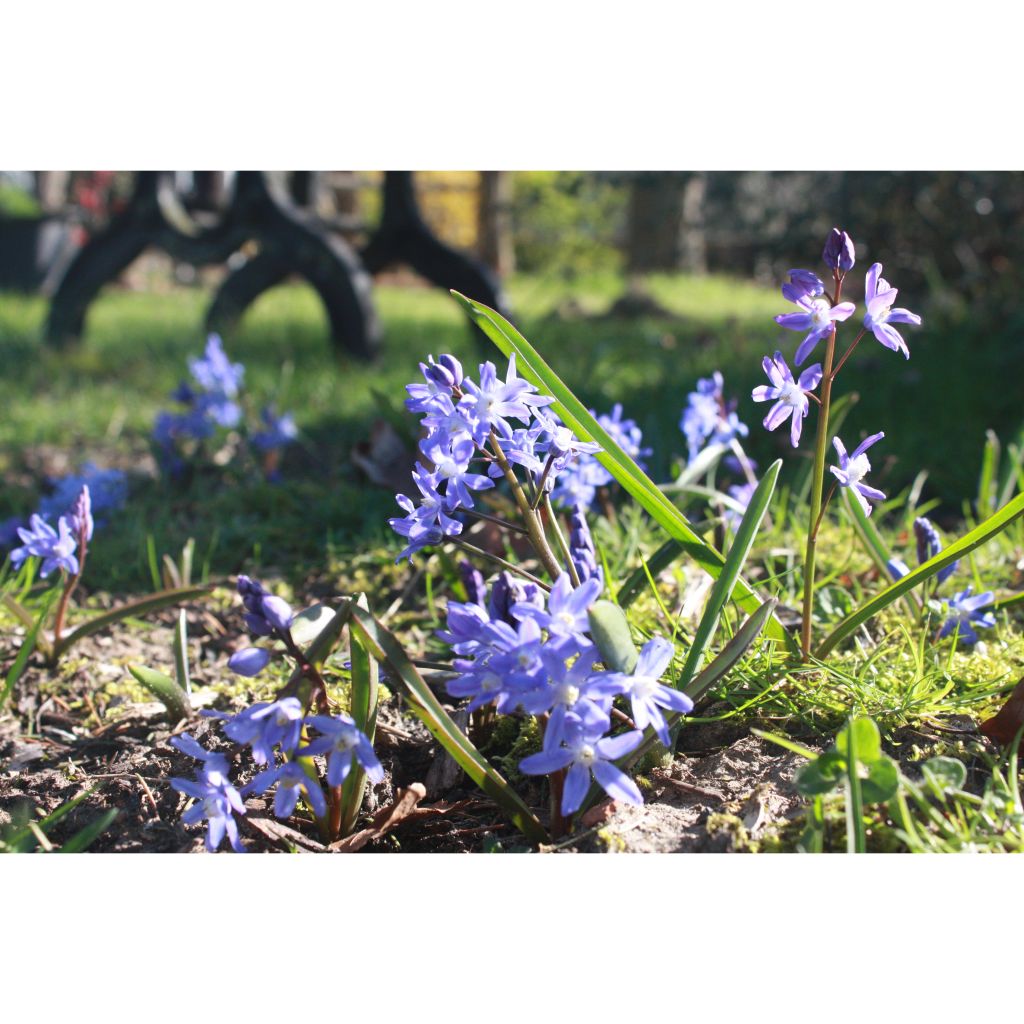

Chionodoxa sardensis
Chionodoxa sardensis
Chionodoxa sardensis
Lucile's Glory-of-the-snow, Squill from Sart
Truly magnificent! Lovely little flowers that are very bright and long-lasting. A discovery that I highly recommend!
Mélanie, 12/04/2021
This plant carries a 6 months recovery warranty
More information
We guarantee the quality of our plants for a full growing cycle, and will replace at our expense any plant that fails to recover under normal climatic and planting conditions.
From €5.90 for pickup delivery and €6.90 for home delivery
Express home delivery from €8.90.


Does this plant fit my garden?
Set up your Plantfit profile →
Description
Chinodoxa sardensis, or lesser glory-of-the-snow, is a beautiful and uncommon bulbous plant. In early spring, it forms large clusters of delicate and refined blue flowers with white centres. It is not demanding and can easily naturalise in woodlands or rockeries, requiring only well-drained, light, humus-rich soil that is not too poor. It is also an excellent species for spring containers.
Still rarely available for sale, the lesser glory-of-the-snow belongs to the Asparagaceae. It is also known, depending on sources, as Scilla sardensis. Contrary to what one might think, it is not native to Sardinia, but derives its name from the city of Sardis, the capital of the ancient region of Lydia located in western Turkey. Chionodoxa can be found in open woodlands or in rocky meadows. From the end of winter, the small onion-like bulb produces 2 lanceolate gutter-shaped leaves of a beautiful vibrant green, often marked with dark red on their margins. Their tips are closed by a rounded fold. Between March and April, a short floral stem emerges, reaching about 15cm (6in) in height, at the end of which a cluster of 10 to 12 intensely purple-blue flowers with white centres unfolds. This bright and attractive colour seems to banish winter, much to the delight of gardeners. It is visually similar to other species like Chionodoxa forbesii, but can be distinguished by its less extensive white eye and its more intense blue colour.
Chinodoxa sardensis thrives in well-drained, light, and moderately moist soil, in partially shaded or sunny positions protected from scorching sun. It is an easy-going plant that is very hardy (-15°C (5°F) minimum) despite its origin in Asia Minor. The colder the winter, the more it blooms! Avoid wet soils in winter, as they would greatly affect its hardiness and long-term survival. Similarly, the bulbs can withstand summer droughts, as they are dormant during this period. However, do not plant them in arid climates. With little maintenance, the lesser glory-of-the-snow naturalises and multiplies abundantly when it finds favourable conditions for its growth. It can be cultivated in containers. The bulbs can be forced indoors.
Chinodoxa sardensis pairs well with other spring bulbs, such as Erythronium 'Pagoda' or Corydalis 'Purple Bird' in woodlands, and with Ipheion or Muscari 'Golden Fragrance' in slightly sunnier borders.
Report an error about the product description
Chionodoxa sardensis in pictures
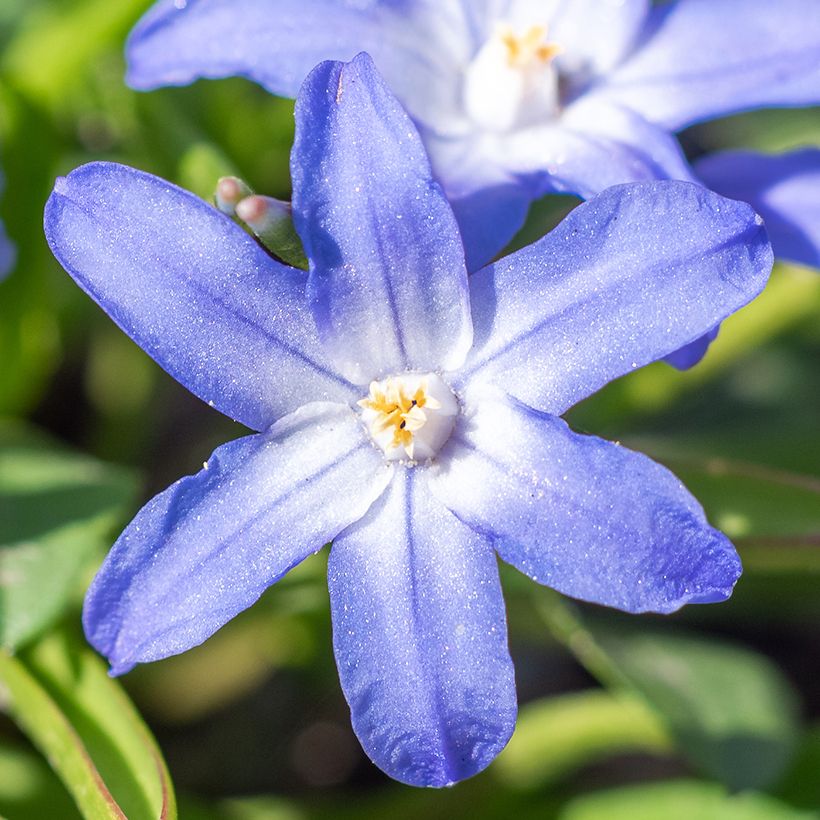



Plant habit
Flowering
Foliage
Botanical data
Chionodoxa
sardensis
Asparagaceae
Lucile's Glory-of-the-snow, Squill from Sart
Mediterranean
Planting and care
Plant Chinodoxa sardensis in October in light and well-drained soil, 5cm (2in) deep and 5 to 10cm (2 to 4in) apart. The bulbs naturalise easily. Leave in place for several years to form beautiful carpets and divide old clumps in autumn. Pot cultivation is possible by planting them closer together. You can also force them indoors like crocuses.
Planting period
Intended location
Care
-
, onOrder confirmed
Reply from on Promesse de fleurs
Haven't found what you were looking for?
Hardiness is the lowest winter temperature a plant can endure without suffering serious damage or even dying. However, hardiness is affected by location (a sheltered area, such as a patio), protection (winter cover) and soil type (hardiness is improved by well-drained soil).

Photo Sharing Terms & Conditions
In order to encourage gardeners to interact and share their experiences, Promesse de fleurs offers various media enabling content to be uploaded onto its Site - in particular via the ‘Photo sharing’ module.
The User agrees to refrain from:
- Posting any content that is illegal, prejudicial, insulting, racist, inciteful to hatred, revisionist, contrary to public decency, that infringes on privacy or on the privacy rights of third parties, in particular the publicity rights of persons and goods, intellectual property rights, or the right to privacy.
- Submitting content on behalf of a third party;
- Impersonate the identity of a third party and/or publish any personal information about a third party;
In general, the User undertakes to refrain from any unethical behaviour.
All Content (in particular text, comments, files, images, photos, videos, creative works, etc.), which may be subject to property or intellectual property rights, image or other private rights, shall remain the property of the User, subject to the limited rights granted by the terms of the licence granted by Promesse de fleurs as stated below. Users are at liberty to publish or not to publish such Content on the Site, notably via the ‘Photo Sharing’ facility, and accept that this Content shall be made public and freely accessible, notably on the Internet.
Users further acknowledge, undertake to have ,and guarantee that they hold all necessary rights and permissions to publish such material on the Site, in particular with regard to the legislation in force pertaining to any privacy, property, intellectual property, image, or contractual rights, or rights of any other nature. By publishing such Content on the Site, Users acknowledge accepting full liability as publishers of the Content within the meaning of the law, and grant Promesse de fleurs, free of charge, an inclusive, worldwide licence for the said Content for the entire duration of its publication, including all reproduction, representation, up/downloading, displaying, performing, transmission, and storage rights.
Users also grant permission for their name to be linked to the Content and accept that this link may not always be made available.
By engaging in posting material, Users consent to their Content becoming automatically accessible on the Internet, in particular on other sites and/or blogs and/or web pages of the Promesse de fleurs site, including in particular social pages and the Promesse de fleurs catalogue.
Users may secure the removal of entrusted content free of charge by issuing a simple request via our contact form.
The flowering period indicated on our website applies to countries and regions located in USDA zone 8 (France, the United Kingdom, Ireland, the Netherlands, etc.)
It will vary according to where you live:
- In zones 9 to 10 (Italy, Spain, Greece, etc.), flowering will occur about 2 to 4 weeks earlier.
- In zones 6 to 7 (Germany, Poland, Slovenia, and lower mountainous regions), flowering will be delayed by 2 to 3 weeks.
- In zone 5 (Central Europe, Scandinavia), blooming will be delayed by 3 to 5 weeks.
In temperate climates, pruning of spring-flowering shrubs (forsythia, spireas, etc.) should be done just after flowering.
Pruning of summer-flowering shrubs (Indian Lilac, Perovskia, etc.) can be done in winter or spring.
In cold regions as well as with frost-sensitive plants, avoid pruning too early when severe frosts may still occur.
The planting period indicated on our website applies to countries and regions located in USDA zone 8 (France, United Kingdom, Ireland, Netherlands).
It will vary according to where you live:
- In Mediterranean zones (Marseille, Madrid, Milan, etc.), autumn and winter are the best planting periods.
- In continental zones (Strasbourg, Munich, Vienna, etc.), delay planting by 2 to 3 weeks in spring and bring it forward by 2 to 4 weeks in autumn.
- In mountainous regions (the Alps, Pyrenees, Carpathians, etc.), it is best to plant in late spring (May-June) or late summer (August-September).
The harvesting period indicated on our website applies to countries and regions in USDA zone 8 (France, England, Ireland, the Netherlands).
In colder areas (Scandinavia, Poland, Austria...) fruit and vegetable harvests are likely to be delayed by 3-4 weeks.
In warmer areas (Italy, Spain, Greece, etc.), harvesting will probably take place earlier, depending on weather conditions.
The sowing periods indicated on our website apply to countries and regions within USDA Zone 8 (France, UK, Ireland, Netherlands).
In colder areas (Scandinavia, Poland, Austria...), delay any outdoor sowing by 3-4 weeks, or sow under glass.
In warmer climes (Italy, Spain, Greece, etc.), bring outdoor sowing forward by a few weeks.


































